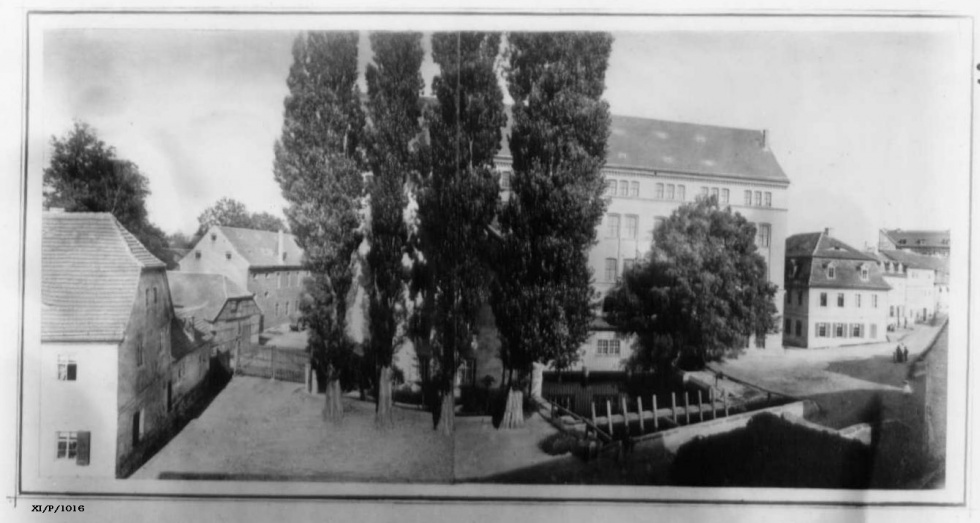Blick zur Obermühle am Zeitzer Mühlgraben.
Urkundlich erwähnt wurde die Obermühle erstmalig von Bischof Witticho II. im Jahre 1373. Da hier von einem Neuaufbau die Rede ist, muss sie also schon länger existiert haben. 1492 ordnete Bischof Johann III. nochmals einen Neubau an. Mit dem Besitzer wechselten auch die Namen der Mühle. Aus der Bischofsmühle wurde unter kurfürstlicher Verwaltung die Amtsmühle. Der Zeitzer Rat besaß sie als Ratsmühle von 1589 bis 1762. 1492 hatte sie sieben Räder, 1667 fünf und 1693 sechs Mahlgänge. 1745 beschloss die durch Kriegsabgaben verarmte Stadt, die Mühle zu verkaufen. Im Jahr 1762 kam der Verkauf an Müllermeister Oberländer zustande. Zuletzt war sie die Rossner-Mühle.
en

